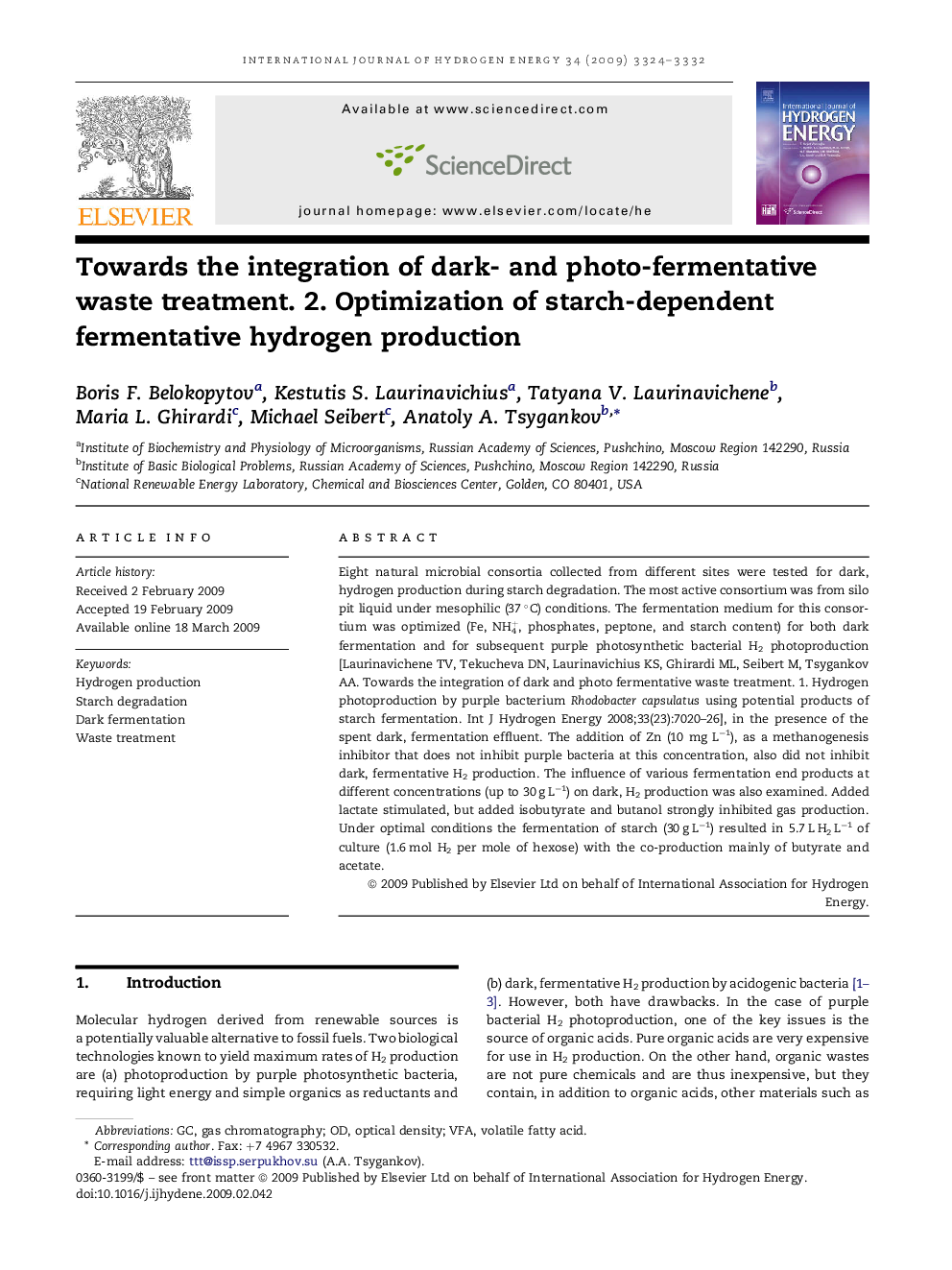| Article ID | Journal | Published Year | Pages | File Type |
|---|---|---|---|---|
| 1274032 | International Journal of Hydrogen Energy | 2009 | 9 Pages |
Eight natural microbial consortia collected from different sites were tested for dark, hydrogen production during starch degradation. The most active consortium was from silo pit liquid under mesophilic (37 °C) conditions. The fermentation medium for this consortium was optimized (Fe, NH4+, phosphates, peptone, and starch content) for both dark fermentation and for subsequent purple photosynthetic bacterial H2 photoproduction [Laurinavichene TV, Tekucheva DN, Laurinavichius KS, Ghirardi ML, Seibert M, Tsygankov AA. Towards the integration of dark and photo fermentative waste treatment. 1. Hydrogen photoproduction by purple bacterium Rhodobacter capsulatus using potential products of starch fermentation. Int J Hydrogen Energy 2008;33(23):7020–26], in the presence of the spent dark, fermentation effluent. The addition of Zn (10 mg L−1), as a methanogenesis inhibitor that does not inhibit purple bacteria at this concentration, also did not inhibit dark, fermentative H2 production. The influence of various fermentation end products at different concentrations (up to 30 g L−1) on dark, H2 production was also examined. Added lactate stimulated, but added isobutyrate and butanol strongly inhibited gas production. Under optimal conditions the fermentation of starch (30 g L−1) resulted in 5.7 L H2 L−1 of culture (1.6 mol H2 per mole of hexose) with the co-production mainly of butyrate and acetate.
